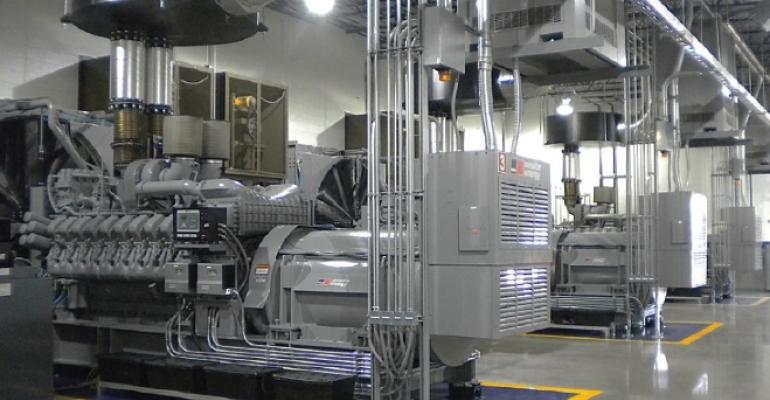
Overview of Power Considerations
Of course every business wants to have full power every day, but for certain sectors, power availability is non-negotiable. Data centers and equipment for hospitals and financial institutions fall into this category. In hospitals and the data centers that serve them, power outages are literally a matter of life and death, while at financial institutions downtime often feels that way.
Here’s a quick look at some key strategies to make sure these types of services are on track to meeting the ideal five nines (99.999%) reliability or uptime.
Uninterruptible Power Supply (UPS) + Standby Power Generators
Having standby power at the ready is the key to ensuring that there are no interruptions to mission critical power. The most reliable system is one that includes, besides the normal utility power, one or more generators, plus batteries that provide uninterruptible power supply (UPS) for at least the moments of transition between utility power and generator power.
The first step to evaluating a generator system is of course figuring out the energy requirements of the system. Knowing ahead of time the full demand of the entire system, including the type of loads, is crucial to making sure the system will be able to perform as intended during those power outage events.
Equally important is to decide on how long the system will be designed to operate at full capacity and what type of fuel will be used. This decision will need to factor in code requirements as well as owner’s aspirations and other considerations. For example in New York City, code requires the generator system be provided with “fuel supply sufficient for not less than 6-hour full-demand operation of the system.” However, it is common for generator systems to be designed with fuel supply for a period of well over 24 hours to supply mission critical loads in case of extended power outages.
The start-up power requirements of the generator system will affect unit selection. A major factor in this calculation includes voltage drops at startup which can be significant since this is the point when major motor loads draw the most current (in-rush current). For larger loads, a set of generators may be the best solution, allowing for a staggered start of motors. Again, regulations may dictate the maximum delay in starting times and standby loads.
On the other hand, purchasing an oversized generator adds to the cost of the system and may actually decrease efficiency and reliability, as many generators are not meant to operate at less than 30% of their rated load. Purchasing a system that allows for a steady ramp-up of power, or “walk-in” helps mitigate the chances of loss of power during the transition to generator power, as it reduces the frequency and voltage fluctuations on the generator output.
Another important factor to consider is total harmonic distortion (THD) which can cause the generator to overheat, and create voltage distortion in the system. It is possible to buy a filter to reduce THD, but it’s important to get the right one to avoid the potential for UPS to fail to pick up the load from the generator power. Your UPS and generator must be compatible: the UPS must accept the range of fluctuations in voltage and frequency that will naturally occur when using generator power. If they are not a good match, power will continue to be drawn from the UPS to the load rather than from the generator during a power outage, leading to the danger of depleting the batteries.
To avoid this, an on-line UPS will convert incoming AC power continuously into filtered DC power, and reconvert it back into AC power with a pure sine wave. This will be music to the ears of your sensitive electronic equipment.
Now what if your generator or UPS coincidentally fails to function during one of those power outages events? This brings us to the concept of redundancy. Depending of the business owner’s investment capability, systems can be designed to address such scenarios. For example, one extra standby generator (or UPS) can be provided, similarly sized with the required system and installed in parallel with said system. This is known as N+1 system configuration and provides greater reliability than the basic system.
Hospitals
For some hospitals, replacing older electrical infrastructure needs to be a priority. The good news is that replacing equipment means less frequent repairs, lower utility costs, increased reliability and safety, reduction and automation of several aspects of maintenance, and often some regained square footage. All of which means fewer headaches for administrators. Investing in modern technology will have a positive impact on both employees and patients.
Financial Institutions
The data needs of financial institutions are vast and vital. Information must flow quickly, without any interruptions. Even a few minutes of downtime during stock market hours could mean the loss of data tracking and action worth millions of dollars. Designing for redundancy and resilience is the key for peace of mind. Ongoing, diligent maintenance of all aspects of the power system is crucial.
In short, there are many details complex in nature to keep in mind when designing mechanical, and electrical systems for mission-critical facilities. Be sure to consult with a professional engineer such as at DOSE Engineering or other experienced professionals as you look at your options.
